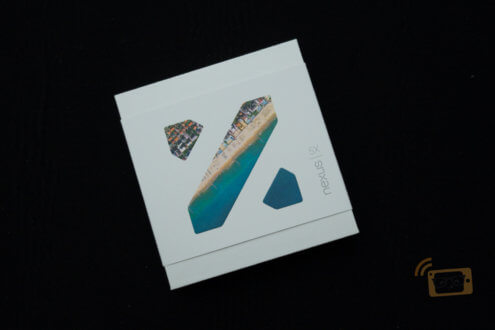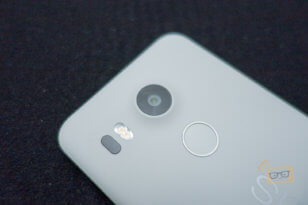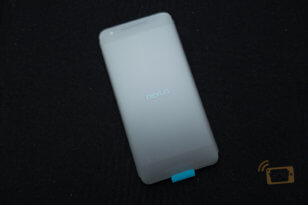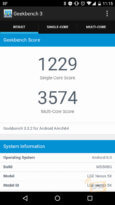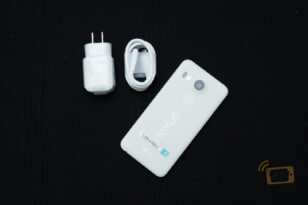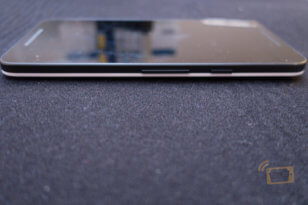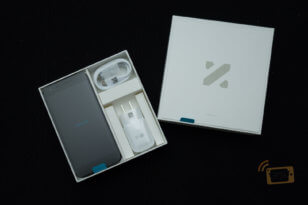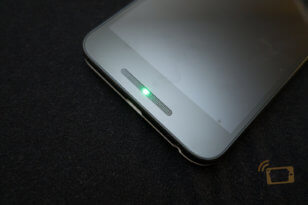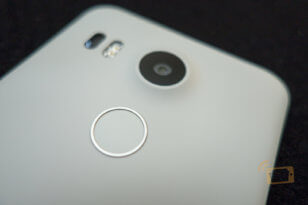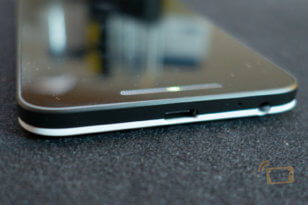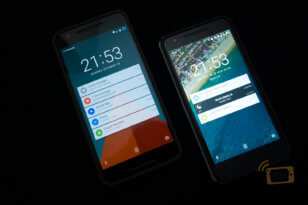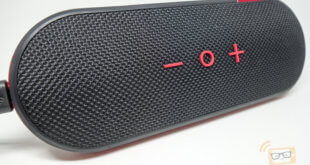Design & Build Quality
Display
Performance
Battery Life
Camera
Audio & Call Quality
Software
The LG Nexus 5X was recently announced by Google. The original LG Nexus 5 that was released back in 2013 and it almost instantly became a hit among Android enthusiast. The device was somewhat attractive and well put together device, not to mention having some respectable hardware and coming in only at a sub-$300 price point. Till today, the Nexus 5 remains to be a great device 2 years later. However, with the release of the Nexus 6 in 2014, Google quickly realized; size-does-matter.
Fast forward this year, Google took the center stage and did something they have never done before – releasing 2 versions of the Nexus line. The Huawei made Nexus 6P and the new an improved revision of the Nexus 5 by LG, simply called the Nexus 5X. Will Google and LG be able to recreate another successful run with the new Nexus 5X? Let’s take a look at the specs before going into our review of this device.
Specs:-
- Processor: Qualcomm Snapdragon 808, 1.8 Ghz hexa-core 64-bit, Adreno 418 GPU
- Display: 5.2 inches, 1920 x 1080 pixels (~423 ppi) FHD
- Memory: 2 GB of RAM
- Storage: 16/32 GB
- Camera: 12.3 MP; 1.55 μm; f/2.0 rear-facing camera, 5 MP front-facing camera
- Battery: 2,700 mAh battery
- OS: Android 6.0 Marshmallow
Review
Hardware
Design & Build Quality
Removing the device out of the box reminded us fondly how alike the Nexus 5X is compared to its predecessor with some subtle and welcomed improvements. Despite having a design and construction that is somewhat boring and conservative, the device felt very manageable with one-handed usages and without any doubt feels very light since it only weighs 136 grams. The device is constructed fully of plastic with a slab of Gorilla Glass 3 on the front of it. Even it being constructed fully of plastic the device surely does not feel cheap and we did not notice any rattles or creaks from the device during daily usages.

The first change we noticed was the relocation of the volume buttons from the left edge to the right edge, right beneath the power button. This leaves the left edge clean without any buttons with an exception for the nano-sim tray. The plastic buttons do not provide the same feedback upon a press like the ceramic buttons do on the original Nexus 5, it just feels less sturdy and soft but definitely not terrible that users will notice a huge difference.

On the back of the device, LG once again used the same soft touch plastic on the back cover with the Nexus brand this time printed over the cover instead of the engraving. The camera is located on top with a oddly shaped lens sticking out in the back. To the left of the lens is a pair of dual-LED lights and a IR laser autofocus sensor.
Located beneath the camera lens is the finger print sensor that is encapsulated in a metal-looking ring that has got everyone Android fan talking about. Also referred to as Nexus Imprint by Google, this sensor uses fingerprints to wake and unlock devices.

Towards the bottom of the device is where the new standard USB Type-C port is located as well as a standard 3.5mm audio jack.

The front of the device is plain without any physical buttons or brandings. Users will ultimately notice a pair of speaker grills, the hidden LED notification light at the bottom speaker grill and also the 5MP front-facing camera located to the left of the top speaker grill.

Overall, we welcome the improvements to the Nexus 5X that LG has done this year. It is very light weight thanks to the plastic construction and coming the 5.2″ screen makes it very usable with one-handed operations.
Display
It is hard for us to say this; but being a ‘mid-range’ device compared to the Nexus 6P, the display is probably its biggest weakness here. The Nexus 5X utilizes a lower-end 5.2″ LCD display that still outputs 1080p at 423 ppi. On paper, that seems fine but when it came to daily usage we suffered very poor viewability under direct sunlight. Thankfully indoor usage was acceptable though not best in-class comparing it to the LG G4. The display seem to have a slight yellow haze to it and does not appear as vibrant and bright compared to even the original Nexus 5.

Like the Nexus 6P, the 5X is also capable of the new Ambient Display feature which displays notification when it detects the phone picked-up by a user.
Performance
The Nexus 5X is fitted with a Qualcomm Snapdragon 808 processor paired with 2 GB of RAM. Users have the options to choose between 16 GB or 32 GB of storage. Like every Nexus device, no external storage is available.
Admittedly, we were equally dissapointed to hear that the device only comes with 2GB of RAM. Running it on Geekbench 3, the device was able to spit out a score of 3574 for multi-core. This score is very similar to the LG G4 which has the same processor as the Nexus 5X but an additional 1GB of RAM.

During our time with the device, we did notice that the device will tend to be a little sluggish over a period of usage and would require a reboot before it’s snappiness and speed comes back again. We’re hoping that this would be fixed in the future software updates from Google.
Battery Life
Inside the Nexus 5X is a non-removable 2,700 mAh battery that provides the juice for the device to keep running. The device is also promised to have fast charging capability with about 4 hours of usage from 10 minutes of charging. However, do not get this mistaken for Qualcomm’s Quick Charge technology – it simply isn’t. Yes it charges rapidly but not Quick Charge fast. We were able to charge the device from 20% to 80% in about 48 minutes using the provided wall charges that utilizes a USB Type-C connection.
During daily usage bouncing between cellular data and WiFi, we were able to comfortably use the device from the morning till night and still have about 30% battery life remaining. This is made possible thanks to Doze; which is built into Marshmallow to help improve battery life. This is comparable to the battery life we were able to obtain from the LG G4.
Unlike the original Nexus 5, the 5X does not come with wireless charging capabilities. We would have definitely preferred to see that come as standard with newer Nexus devices since it’s first appearance on the Nexus 4.
Camera
The camera hardware was never one of the strengths of any Nexus devices we have experienced in the past. However, with the Nexus 5X and 6P the camera has proven to be the greatest improvement overall. The 12.3 MP camera features a 1.55 μm sensor that was able to pull any source of lighting to create one of the best low-light pictures we have had this year from an Android device.

Picture taking on the Nexus device was simple and shots taken were vivid, bright and detailed. Just simply turn on the camera app, let the auto focus do it’s magic and just push on the capture button and a great picture has been captured without much initiative.
Swiping over to the left quickly changes it to video mode – The device is capable of recording at 4K quality or even in slow-mo at 120fps. There is a lack of Optical Image Stabilization (OIS) in this camera hardware but we did not notice any major degradation in video or picture taking during our tests.
Audio & Call Quality
LG took the opportunity to give the Nexus 5X front facing speakers as opposed to rear or bottom facing speakers in past models. A caveat to that; they are not stereo speakers meaning only the bottom speaker works while the top speaker is solely for making phone calls. The speakers on the Nexus 5X are nothing to brag about, it is loud even at the maximum setting and audio coming out through the speaker sounds very hollow. This could be again attributed to the fact that it is the lesser model compared to the Nexus 6P.
We tested the device on the AT&T network in a 4G LTE coverage area. During the multiple phone calls made, we notice that calls were significantly clearer and audible compared to the Nexus 5. The device has 3 microphones placed around the phone and it does a great job filtering out background noises and capturing conversations.
Software
Following the trend of the Nexus line, the 5X comes pre-loaded with the latest treat from Google – Android 6.0 Marshmallow. Therefore users will get the pure vanilla Android experience right out of the box. We will be covering more on Marshmallow with an in-depth review.
The Nexus 5X has a couple unique functions that came with it; users could press the power button twice to launch the camera app from sleep. This is especially useful to capture moments at an instant. A slight issue we’ve had is there seem to be a slight lag upon activation of the power button. There’s also Nexus Imprint that we feel would give the iPhone’s a run for its money in terms of speed and accuracy of the read.
Final Thoughts
The Nexus 5X is a very interesting piece of hardware that we have tested. There is no doubt that the 5X is the little brother to the 6P, which is a little inferior specs wise. The 5X shines in terms of its size and weight. However, it falls short when it comes to it’s less than adequate display and its mono front-facing speakers.
LG and Google has definitely nailed it with the camera that came with the Nexus 5X. It works exactly how Google claimed it to work – taking great low light pictures and amazing pictures in daylight. We also feel that the fingerprint reader is the best-in-class we have tested this year.
If Google is able to iron out some bugs with the Nexus 5X it has the potential to be a great mid-range device in the market. Currently as is, the device is good but still lacks a couple refinement in our humble opinion. Overall we feel that it is indeed an improvement compared to the original Nexus 5 but it could have been better.
 Pocket Insider Latest Technology Review
Pocket Insider Latest Technology Review
